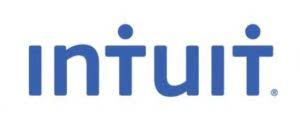
These might be necessary to cover any deficits between current assets and liabilities. A company aiming to meet its CSR ought to practice responsible borrowing. This means taking on debt that the company is confident of repaying within a particular timeframe, thus ensuring that lenders are not put at undue risk.

Operational efficiency
By calculating this figure, investors and creditors can better assess how solvent a company is and whether or not it can stay financially afloat. Current liabilities are a company’s debts or obligations that are due within one year or within a normal operating cycle. The net working capital calculation is an essential financial Accounting for Churches metric used to measure the deviation or divergence between an entity’s current assets and current liabilities. Every business enterprise extensively uses this metric to understand the economic or financial condition of the enterprise. There are many reasons for a company to have negative working capital.

What is a good net working capital ratio?

It might indicate that your business isn’t investing its resources effectively. Conversely, low working capital doesn’t always spell trouble — it could mean your business is highly efficient. Working capital focuses on a business’s ability to cover immediate expenses but doesn’t account for its overall profitability. Your business can have positive working capital yet still struggle to turn a profit. The retailer buys inventory, sells goods to customers, and collects payment in cash. Time is fixed assets just as important as dollars, and businesses that can convert a sale into cash faster than the competition are better off financially.
The Benefits of Having a Positive Working Capital
Operating working capital strips down the formula to the most important components. Prepaid expenses and notes receivable are two current asset accounts that are excluded from the calculation because they don’t relate to daily business operations and are used less frequently. The quick ratio (or acid test ratio) adjusts the current ratio formula by subtracting some current assets that take longer to convert into cash. Net working capital is important because it gives an idea of a business’s liquidity and whether the company has nwc meaning enough money to cover its short-term obligations.
- Under sales and cost of goods sold, lay out the relevant balance sheet accounts.
- It can help you to make business decisions that can promote growth, cash flow, and your ability to obtain financing by assessing your current assets and liabilities.
- These are commonly used as part of the underwriting process and part of the standard small business loan requirements of lenders.
- You can submit a simple application with no impact to your credit, and receive a lending decision in as little as 24 hours.
- A positive result indicates an increase, while a negative result shows a decrease.

This allows you to calculate your net working capital, which is an indication of the solvency of a business. The net working capital ratio measures the percentage of a company’s current assets to its short-term liabilities. Operating working capital includes the current assets and current liabilities that relate to day-to-day operations of a business, rather than NWC, which looks at total assets and liabilities.
- It calculates a firm’s ability to cover its short-term liabilities with its short-term assets.
- If you implement these changes, you’ll convert current assets into cash much faster.
- Overstocking leads to increased holding costs and the risk of goods becoming obsolete.
- The ratio is current assets subtracted by current liabilities, and every business needs to maintain a ratio of at least 1.0.
- The interpretation of either working capital or net working capital is nearly identical, as a positive (and higher) value implies the company is financially stable, all else being equal.
Total Capital: What Is It, Calculation, Importance & Interpretation
- If your business’s net working capital is substantially positive, that’s a good sign you can meet your financial obligations in the future.
- This correlation between cash flow and working capital stems from the components of NWC itself – current assets and liabilities.
- Periodically review your fixed and variable costs to identify areas where you can cut expenses without compromising business efficiency.
- To recap, current assets include cash and assets that will be converted into cash within 12 months and current liabilities are bills that must be paid within 12 months.
- Long-term assets such as equipment and machinery are not considered current assets.
- If your plan for the next six months reveals negative cash balances, you’ll need to collect cash faster.
The NWC ratio measures the amount of current assets relative to current liabilities. It provides a snapshot of how much cash a company has available to cover its short-term debt obligations and investments. A higher NWC ratio suggests that the company has more of its current assets than it does of its liabilities, thus giving them an advantage when confronted with meeting its short-term financial demands. Similarly, a lower NWC ratio indicates that the company may struggle to cover its short-term debt obligations and investments. If you can’t generate enough current assets, you may need to borrow money to fund your business operations.
Breakdown of Current Assets and Liabilities
- Adding up all of these gives you the total current liabilities of a business.
- For a company to function and run its operations seamlessly, it’s important that a business owner keeps an eye on net working capital.
- This means the company has $70,000 at its disposal in the short term if it needs to raise money for any reason.
- This value can be positive or negative, depending on the condition of the business.
- For example, if a company has $100,000 in current assets and $30,000 in current liabilities, it has $70,000 of working capital.
Each month’s beginning cash balance plus cash inflows, minus cash outflows equals your ending cash balance. For businesses with seasonal fluctuations, working capital can vary significantly throughout the year. This variability can make it challenging to use working capital as a consistent measure of financial health. If you can increase sales and minimize inventory levels, the ratio will increase. Increasing the ratio means that you are making more sales without having to increase the inventory balance at the same rate.
